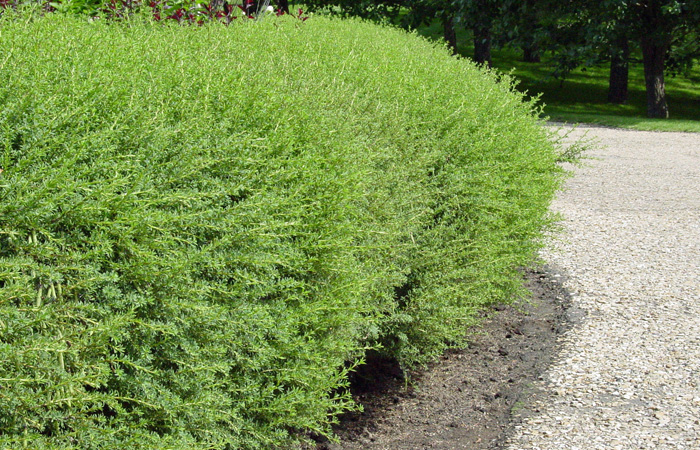Have you ever seen a hedge that was not growing at uniform rates? Some plants were taller and fuller than others? Or perhaps some plants had completely died off? It is important to remember that each plant is an individual and its needs may be different than the plants on either side of it.
It is also important to remember every planning location is unique. There could be a slight slope in your yard, causing all the water to run to the backyard. In a rainy summer this can cause the plants at the bottom of the hill to be too wet, or in a dry summer the plants at the top could suffer from drought. Another factor is the soil. The soil type can change drastically within a 6′ wide area, especially in town where landfill is commonly used for levelling. The soil around the house could be decent topsoil, brought in for flower beds, while a few feet away from the house it changes to hard packed clay. I have seen several hedges where there is an obvious lack of growth in the plants even though they are, and soil level remains the same. As soon as you turn over a shovel full of soil it becomes clear that the clay soil there was so dense that the plants could not successfully break it down for nutrients. This can be addressed by yearly doses of sulphur fertilizer.
It will also be critical to remove the grass from the area you want to plant in. If the grass is not removed it will steal up to 80% of all the water and nutrients. I have touched in this fact in many of my blogs. Do not trust the grass. Every new plant will need a 3′ wide area kept clear for at least 5 years to get a good start. Tilling can work well to start, but wood chip mulch is beneficial long term for nutrients and moisture retention. It also eliminates the risk of damaging doors with the tiller.
I think one if they most common questions about growing a hedge must be how and when to cut. I personally prefer not to cut at all during the plants first year in the ground, unless something needs serious correction. In the second year I would cut off a few inches from all the longest branches to help them fill out and avoid becoming gangly. Every time a branch too it cut the plant has a hormonal response. The plant understands that the lead bud (or apexel bud) has been lost, and the branch cannot grow any longer. The plant then puts its efforts into growing out the next 5-10 buds along the remains branch. Each of these buds will become its own branch with its own lead bud. You can see how this process can rapidly multiply the density of a plant with just one pruning.
As I mentioned earlier in my previous blog, the ideal pruning times are in spring or fall. To be more specific any time between when the leaves start budding, and mid-June is good, as well as any time after leaves start fall off until the early snowfall. It is best to avoid pruning during summer heat as this is when plants will dehydrate and stress the quickest, and diseases are most likely to set it. Pruning also reinforces fresh growth. If pruner at the incorrect time the plant may continue growing all through the fall and into winter, resulting in frost damage to the tender new growth. That is why it is best to wait until you see the plant shutting down and dropping leaves before pruning in fall.
One exception to the common rule is lilacs. Lilacs are very simple cars plants but one area they are particular is pruning time. Lilacs typically bloom once a year in late spring or early summer. Right after the blooms have begun to fade the time to prune begins. You see once a lilacs blooms fade you only have 2 weeks until it will develop the flower buds for the next year. Therefore any pruning that is done outside of this 2 week window will result in cutting off flower buds and reducing your flower for next year. For people who are allergic to lilacs this may actually be beneficial. But for the gardener looking forward to the spring blooms it can be disappointing and frustrating.
I conclusion I hope this information has not been disappointing or frustrating. If you ever have more in depth question about hedges, or you have other questions that need answers always feel free to email us – we would be glad to help.




